Buyer’s Journey: Understand 3 Stages and Content Types

Have you ever heard the story of the guy, who brought a diamond ring to the first date? No, you haven’t. Likewise, it’s not the best way to approach a cold prospect with a price quote.
If you work in a marketing-related business, you should have noticed all the buyers go through some sort of journey. As you read along you’ll see, the buyer’s journey and relationships have similar dynamics.
So it’s easy once you know when and what to do. Let’s define the buyer’s journey first,
What is the buyer’s journey?
The buyer’s journey is a three-stage framework that helps companies to build an everlasting relationship with buyers. It’s also known as ToFu (Top of the funnel), MoFu (Middle of the funnel) and BoFu (Bottom of the funnel).
This journey is not a single long line. First, you meet, then you discover the common interest of each other and you decide to keep them for a lifetime.
It’s a good practice to learn how to use your resources to turn your prospects into buyers.
In this guide, you’ll;
- Explore three stages of the buyer’s journey; awareness, consideration, decision.
- Learn how to build effective strategies for each stage of the buyer’s journey.
- Understand how your buyers think
- Learn which type of content to use and how to craft them for different stages.
You see, it’s a comprehensive guide. By the end of it, you’ll have a clear understanding of the buyer’s journey. You’ll start to tackle your revenue challenges.
Let’s start with the awareness stage then.

The Buyer’s Journey: Awareness Stage
In the awareness stage, customers either got to know your product or service or they have at least realized that they have a need to fulfill. Most potential buyers will then google terms in order to find solutions for their pain points.
Your goal in the awareness stage is to increase the brand and product awareness by providing solutions to these pain points.
As you respect the next three elements, you will come to a solid strategy for the awareness stage.
Brand values
Your potential buyers want to know about your company and what your services are. You must not forget that they do not only buy your service, they also want to support a company they like and trust.
To make this happen, give your potential buyers a transparent and trustworthy impression of your brand and purpose. Do not put sales pressure on your audience in the awareness stage.
Create valuable content that answers your customers’ questions, give them basic information on your product in exchange for their contact details or other valuable information.
Make sure your content reflects your brand purpose and language.
Prove to your customers that yours is the best solution for them
A nice-to-have product? Nobody buys that. Companies do not invest in something that is not a need.
In the awareness stage you need to show your customers why your service is a necessity for them. Prove to them how your product helps others.
Create informative and educational content that exposes your audience’s problems. Introduce your service as the best solution.
Create a FOMO (Fear of missing out) feeling
What would happen if they miss out on the opportunity to use your service?
What is it like to use your product to approach daily challenges?
How does your product facilitate the (corporate) process that needs a fix?
Emphasize the experience of your service with appropriate content and demonstrate the added value of your features.
Type of content we love to use in the awareness stage:
Blog posts
Blog posts are inarguably the most popular content form of the awareness stage. This is the type of content that makes your brand name appear on the first pages on Google.
Evidently, a more prominent appearance on Google is possible with a good S.E.O. (search engine optimization) strategy.
Why are blog posts so popular?
- They provide thorough, educational copy that answers specific questions;
- You can position your company as an expert amongst your competitors;
- They increase your S.E.O and domain authority;
- If their content is elaborated properly, it can create a continuous influx of customers.
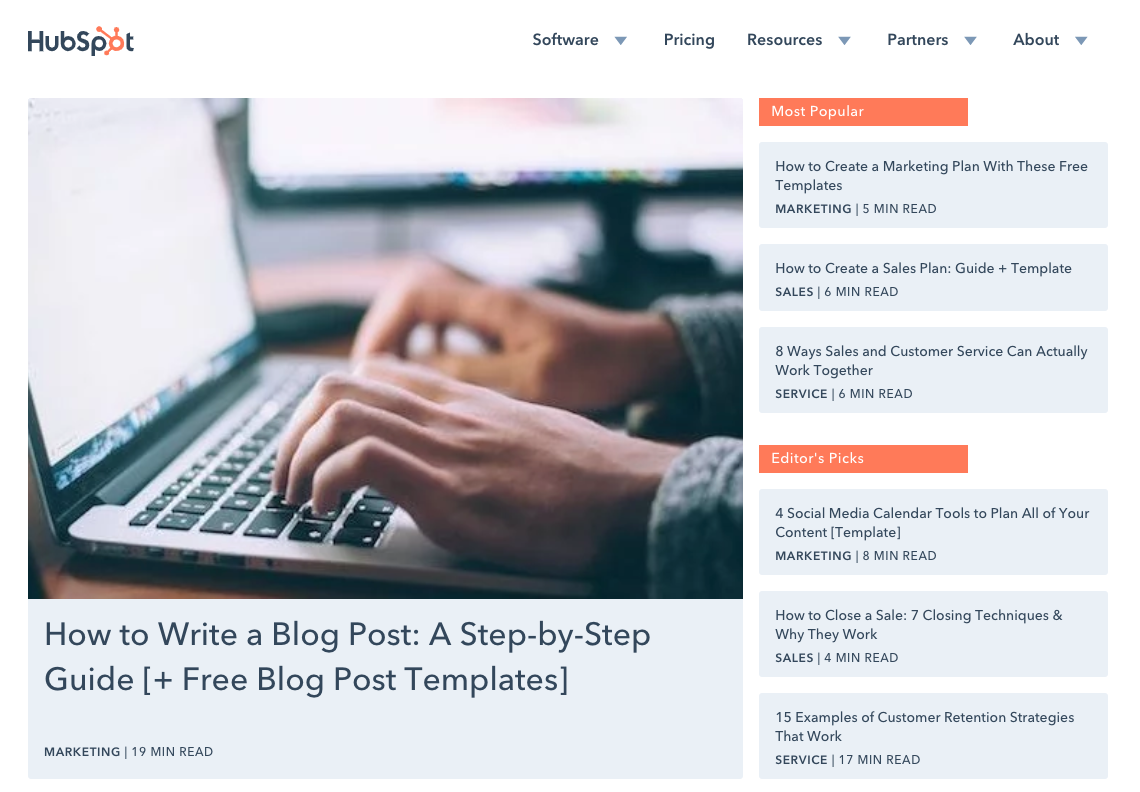
Source; Hubspot
The best way to find content for your blog is to think like your customer. Create a list of all the possible questions your audience might ask before they purchase your product.
If your product is a chatbot, you do not want to start with a blog post that explains what your product is capable of.
First, you need to educate your customers with content such as “Why businesses need chatbots in 2020” or “How top three retailer giants doubled their sales with chatbots”.
Before you even pick a topic for your content, it’s important to know your niche. Niche is essential to build an effective buyer’s journey. We wrote a pretty detailed how-to guide about niches, you can check it here.
If you need inspiration in the E-commerce field you can also check this article.
How-to videos
Naturally, people are always eager to do those things that take less energy and attention. Nowadays we consume more video content than ever before.
How-to videos provide you the chance to answer questions and share your knowledge with your audience. There are several reasons to use how-to videos in the awareness stage:
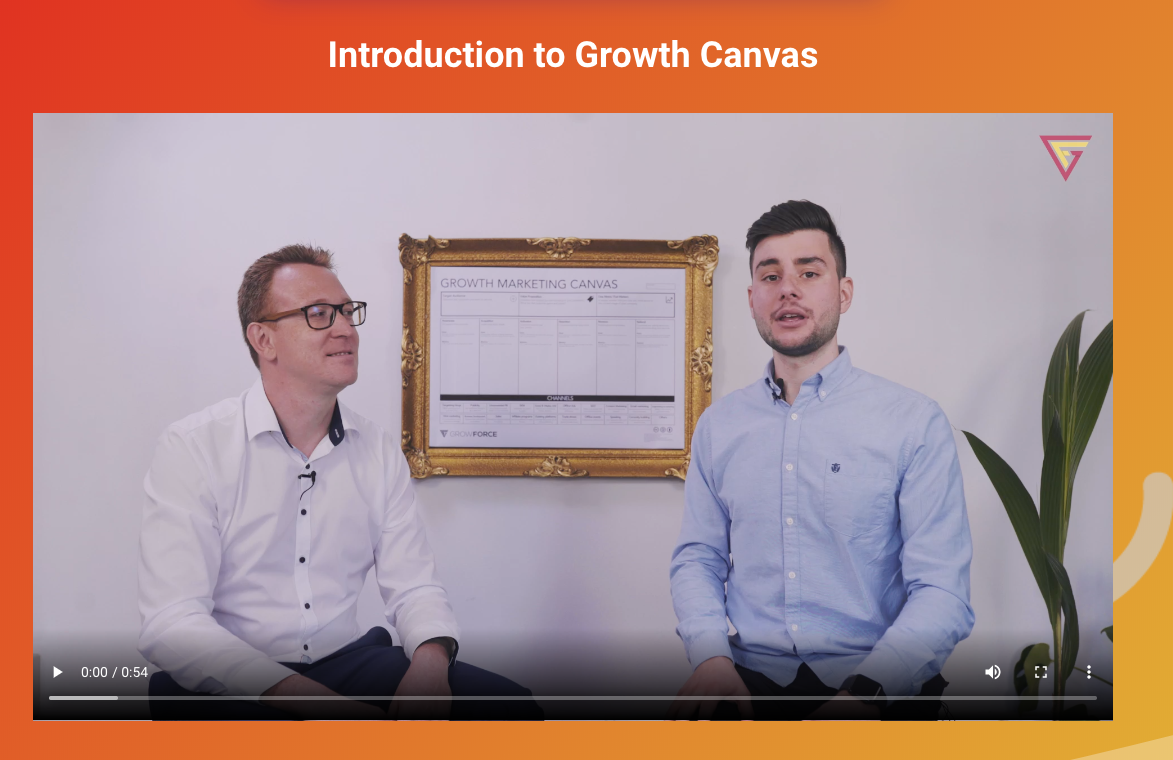
- 30% of people use YouTube to look for how-to type videos;
- People prefer watching over reading;
- Videos build trust because of the human nature of the communication;
- How-to videos can be helpful to your audience, especially if the product is complicated or follows a learning curve;
- Videos are good for S.E.O. and help you to climb up the Google ranking
Fact: viewers retain 95% of a message when watching it in a video compared to 10% when reading it in text.
Do not forget to post your video content via multiple channels such as YouTube and LinkedIn to create more fuzz around them and always add CTAs that lead visitors to your related videos.
Ebooks and other downloadable contents
These resources are also known as lead magnets. They carry valuable content that often, in order to be downloaded, requires more information of the contact in exchange. Here is a list of the contents that you can use in the awareness stage:
- Ebooks
- Guides
- Tips sheets
- Templates
- Checklists
- Slideshares/Powerpoint presentations Educational webinars
- ….
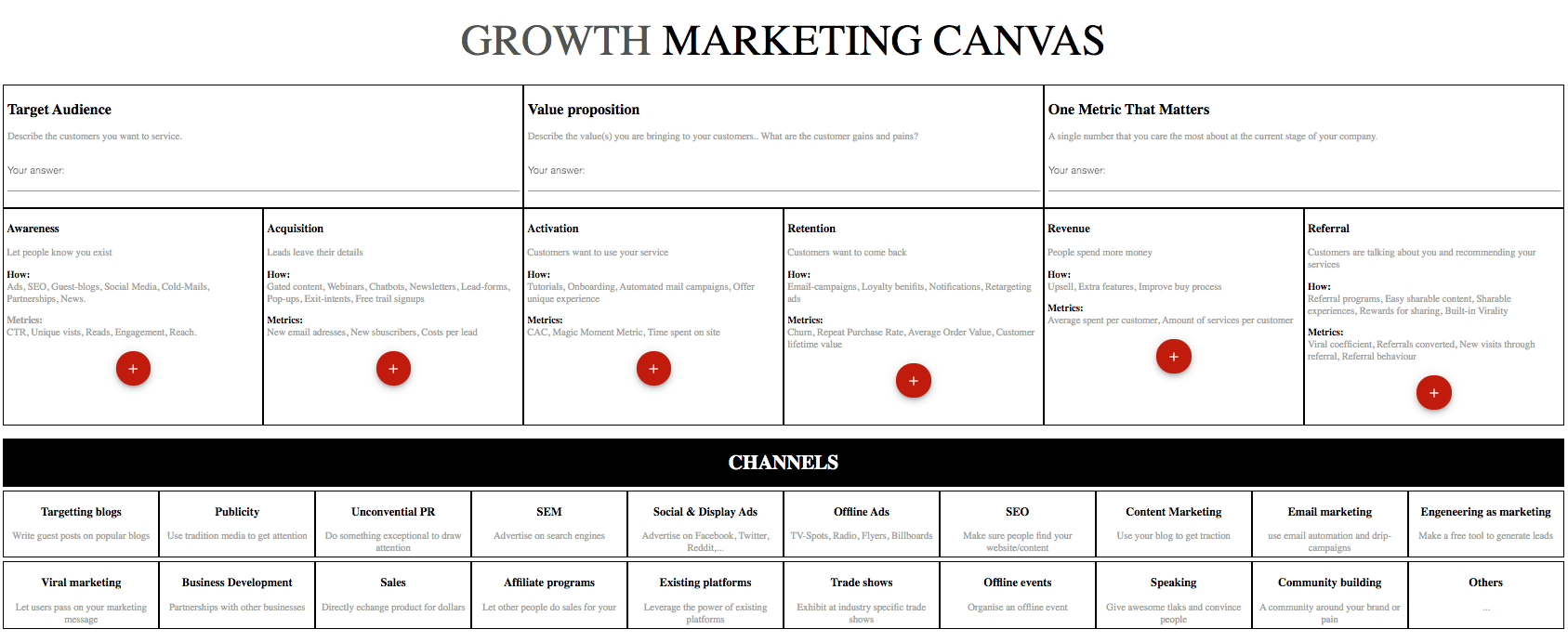
The goal of this type is to cover as much value as possible with only one piece of content. This is the content that gives an impression of what could happen when customers decide to use your service.
You can link these resources to your blog posts, videos and campaigns to gain contact information and lead them towards the purchase stage.
If your content is comprehensive enough, it can go viral within your niche and this way also boosts your awareness.
Marketo established their brand’s customer base by publishing highly- detailed ebooks and free resources. They could then very easily sell these ebooks, exactly because of the level of expertise.
Infographics
Infographics are informative, well-ordered and visually attractive graphics that deliver a lot of information within seconds.
The brain processes visual content faster than the text. This makes infographics easier to understand. Moreover, people tend to share infographics more than any type of content.
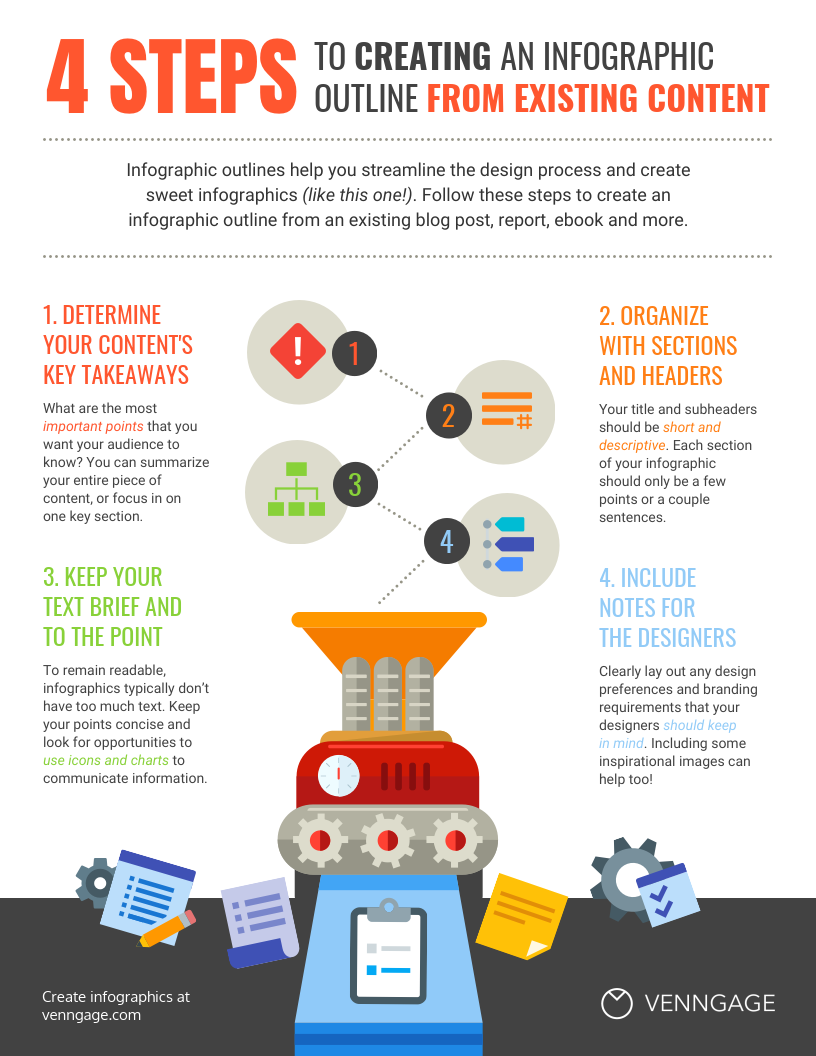
A comprehensive type of content that contains a lot of numbers or data can easily be transformed into an infographic. It also works the other way around: you can turn an infographic into a blog post without too much effort. It’s highly valuable for the awareness stage because it’s two for the price of one.
This was the first stage of the buyer’s journey. Now you have the basics and an idea to which type of content to use in the awareness stage. Now it’s time to move on to the consideration stage.
The Buyer’s Journey; Consideration Stage
At the consideration stage, leads are aware that your product or service can fulfill their needs. They are however still to determining whether you are the best fit or your competitor is better. This stage of the buyer’s journey is all about competition.
Your leads will put all other options on the table and start to do substantial research. Afterwards, they will compare different services and then try to figure out which works best for them and their specific purpose.
This is the moment your content comes into play to nurture leads and build a relationship of trust with your audience.
Herein lies a huge opportunity to capture potential buyers. According to Salesforce, 68% of companies have not identified their sales funnel nor have they attempted to measure one.
Type of content we love to use in the consideration stage
Case Study
In this phase of the buyer’s journey, your potential customers are far more interested to see tangible results and real cases. They want to see your service or product put into action.
How does it solve your customers’ problems and meet their needs?
This type of content is highly effective because it enables your audience to link with someone who encounters the same issue. In other words, your customers become your sales team.

Source: Marketo
Your content needs to highlight the most important information, show the positive results and explain how exactly your product or service solves the specific problem. You can pick one of these content types to start with:
- Case studies
- Use cases
- Reports
- Whitepapers
Product Webinar
A live webinar is a perfect opportunity to spark a conversation and establish credibility between you and your potential buyers.
You can show the benefits of your product and simultaneously answer frequently asked questions among your audience.
You can link the webinar session to related awareness stage content with a CTA to invite your prospects. But keep in mind that preparation is necessary before you start a webinar.
Otherwise, things can go wrong and all your efforts can backfire. Here is a quick checklist to create a successful webinar content:
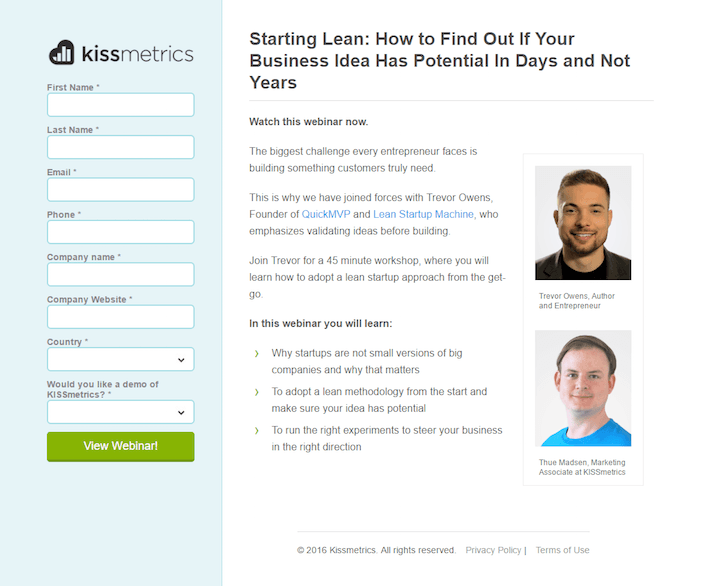
- Make a list of topics;
- Gather insights based on your analytics;
- Analyze which of your blog posts have been the most popular;
- Find out which questions you regularly receive from your clients;
- Spot the common problems among the community (Quora, Reddit, FB groups).
At the end of the session, spare some time for a Q&A to clear the mist of questions. You can record the session to send a follow-up email to spot which of your prospects are more interested in your product or service.
This content type is highly valuable for the consideration stage because your potential buyers will get to know you on a personal level.
Comparison Content
Eventually, your customers will compare your product with your competitors’. There are two very good reasons for you to do it for them.
On one hand, you make things easier for them and on the other, you highlight the areas in which you excel.
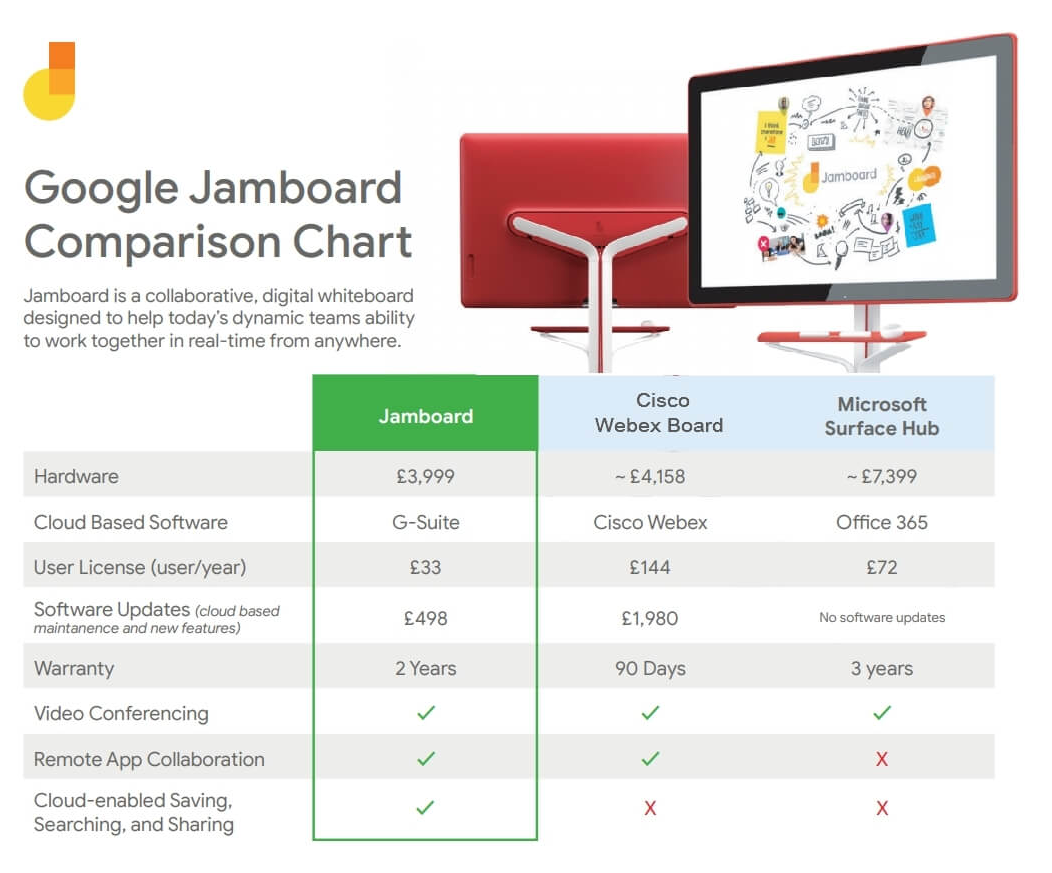
Identify your competitors and distinguish those features of your own product that make a real difference. Determine what delivers the most value to your prospects: is it the cost, convenience, quality, technology?
If you already found your niche and pain points, things get easier and more time-efficient. The predominant goal, however, is to show your very own unique genius.
To avoid this comparison to come across like a sneaky sales effort, do not make it look like a commercial of your product or service. Provide a fair comparison chart that shows the value of your product and why it stands out in the fierce competition.
However, you better don’t show every single detail.
Demo Video
As we mentioned before, it is easier to consume and understand video content than most other types of content.
A demo video contains information about your product features and ideally, it shows how you can solve the problems of the prospect.
Besides this, it helps you to build a brand image and distinguish your product from the competitors. Slack presents its features clearly and demonstrates how to use the application in a good way.
Music, voiceover and style are all elements that play an essential role in this. If you want to create an attractive demo, you need to hit all the notes.
FAQ (frequently asked questions)
FAQ is a must-have for any company, especially when your service or product has a learning curve or a complicated use.
You may think the product’s demo video is clear, but people at this stage often seek for further details and more advanced explanations.
F.A.Q. must-haves:
- Cover a wide range of intent (transactional, informational, locational);
- Get updated based on the latest data insights;
- Drive internal page views to other relevant pages;
- Answer your audience’s questions;
- Feed the blog content
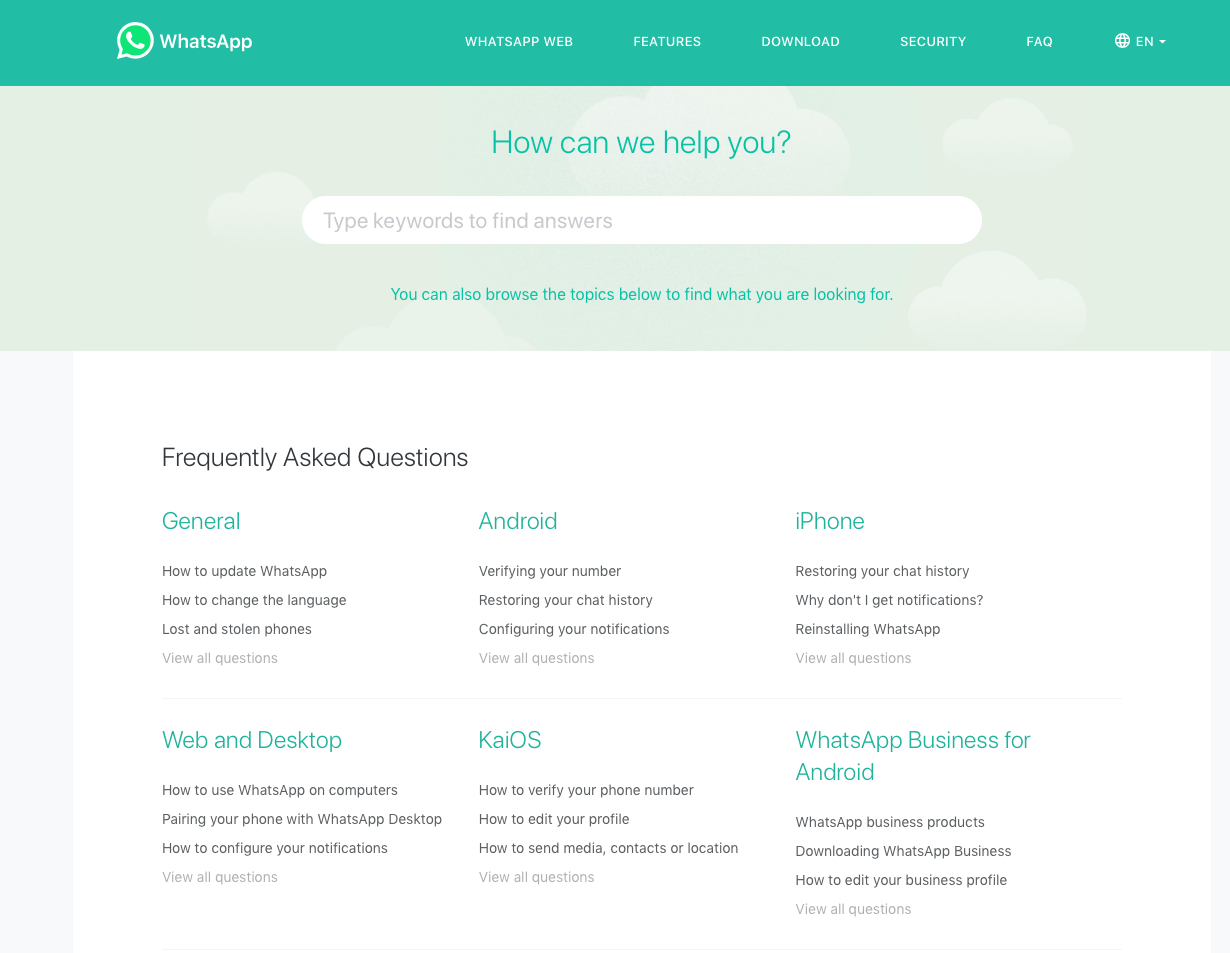
Source: WhatsApp FAQ
Once you make a list of the frequently asked questions, you can reuse them in a blog and social media channels or add them to your email sequence. You can even create a video series to answer most FAQ.
That’s it for the consideration stage, let’s move to the last stage.
The Buyer’s Journey; Decision Stage
The Decision stage is the beginning of the sales cycle. Your customers are now qualified and ready to make the purchase decision.
The options have been narrowed down, the leads are looking for the most convincing solution and the best offer. This is the last push.
With the right type of content, compelling offers, persuasive call-to-actions and determined salespeople, you can convert the leads into your customers
Type of content we love to use in the decision stage
Free Trial
A free trial is one of the most potent strategies for the decision stage and can significantly increase your lead conversions. Providing a free trial lets the leads feel the hands-on experience.
This way, people can understand what they will buy before they are committing. Most people prefer to go to real shops to feel and try the product.
The free trial content strategy is the same for online B2B buyers: it takes away doubts and makes leads feel more comfortable during the decision stage.
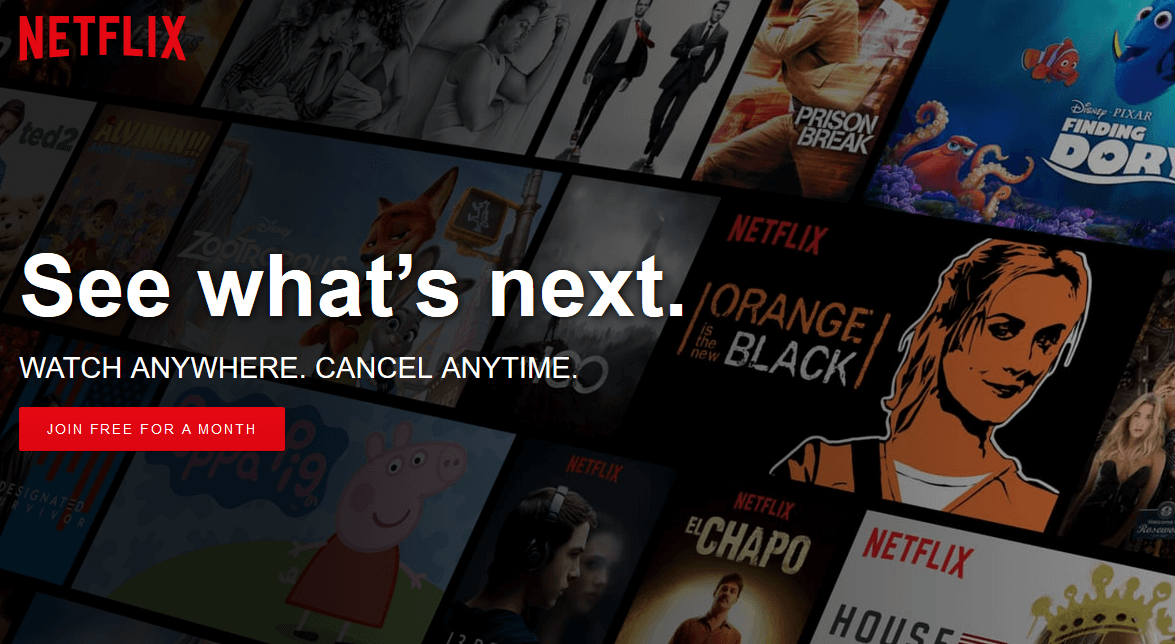
Companies like Netflix and Amazon exploit the power of a free trial very well. They offer all premium futures free for a month knowing that it will be hard for their leads to let go of the benefits when the trial period is over.
Free consultation
A free consultation is an opportunity to show personalized attention. This is the first face-to-face conversation between you and your potential buyer.
Why is it so effective?
First, you answer questions by showing personal interest and you discuss their thoughts. The most important thing now you know each other on a personal level, is that you take the first step to help to resolve the problems.
According to the psychology of gift-giving, this trade of information makes the bond even stronger and the receiver is more likely to give something back. This kind of communication often leads to a smooth take-off and puts you one step ahead of your competitors.
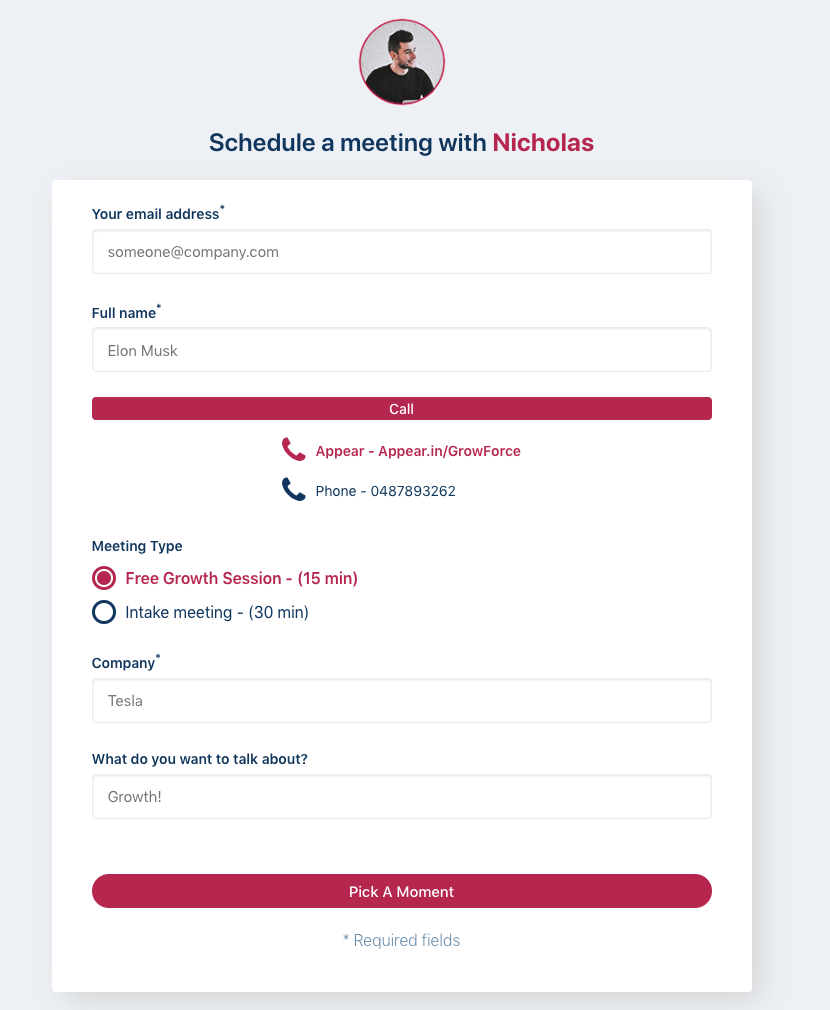
There are a number of tools out there to set up one of these sessions, our favorite tool to use is free and is called Plann3r.
Live Demo
The live demo is the twin of the free trial. It means a session between your salespeople and customers.
Sometimes clients prefer not to wait for a free trial or simply want to see the service in harness to resolve their questions.
With a live demo content, you give a potential client a view on how your service functions. That would help them make a quicker decision on this stage.
If you send a copy of the session, they can share it with their team and report back to decision-makers.
Promotion/coupon
Discounts are one of the best-known strategies to convert people during the decision stage. A simple promotion code can be the offer that your potential buyer is waiting for to take action.
If your leads are hot and ready, consider using promo codes to create a FOMO feeling.
“The last ten days for an x% amount discount” or “the last two days to buy with a 30% discount” can trigger a purchase at this level.
Try to send out a randomized code that looks like B938MKY – this way it feels like it is generated for a specific client.
Video Testimonials
Video testimonials provide potential buyers the ability to see actual clients and their real opinions about your service. A satisfied customer can be more effective than your company’s most persuasive salesperson.
Videos trigger emotions. The human brain is full of mirror neurons which recognize and reflect feelings to the viewer. When a customer is genuinely satisfied with your service, your potential buyers will be able to feel it, too.
People sometimes trust unknown people on the internet more than their family or friends. So, if you have a compelling video testimonial, it could lead the potential customers to make the purchase decision.
Besides this, video testimonials have twelve times more share value than text content and you can use them as mailing material for your campaigns.
Including social proof strategies on your mailing sequences can lead to higher conversion rates.
The most critical thing in video testimonials is the catch of a natural frame. A suitable space, relaxed atmosphere and flowing speech can deliver feelings. On the other hand, a robotic speech from a script may seem fake.
Here, you can watch this testimonial to witness the mirror neurons magic.
Estimate
When a lead requests a quote, this implies he is very close to making a decision. So make sure to add more info to your offer and to emphasize additional benefits such as a discount or an advantageous payment plan to convert that hot lead into a customer.
Mix up all the stages in the buyer’s journey and experiment
Every product goes through different phases and has varied strengths. Keep in mind that these are the most used content types in the buyer’s journey, so you don’t have to follow that list strictly.
You can mix up the strategies and use an awareness stage content on the consideration stage. A comprehensive case study report could also be a highly influential content for the decision stage, so feel free to try new things with your buyer’s journey. It’s your journey after all.
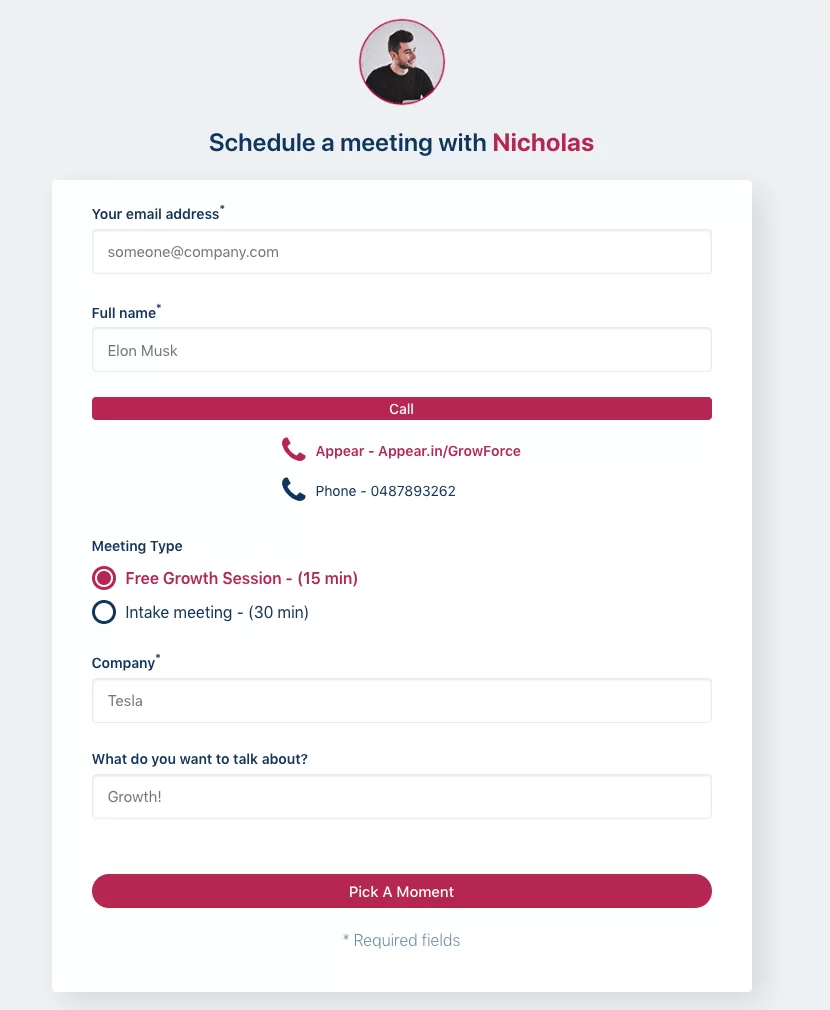
There are a number of tools out there to set up one of these sessions, our favorite tool to use is free and is called Plann3r.
Live Demo
The live demo is the twin of the free trial. It means a session between your salespeople and customers.
Sometimes clients prefer not to wait for a free trial or simply want to see the service in harness to resolve their questions.
With a live demo content, you give a potential client a view on how your service functions. That would help them make a quicker decision on this stage.
If you send a copy of the session, they can share it with their team and report back to decision-makers.
Promotion/coupon
Discounts are one of the best-known strategies to convert people during the decision stage. A simple promotion code can be the offer that your potential buyer is waiting for to take action.
If your leads are hot and ready, consider using promo codes to create a FOMO feeling.
“The last ten days for an x% amount discount” or “the last two days to buy with a 30% discount” can trigger a purchase at this level.
Try to send out a randomized code that looks like B938MKY – this way it feels like it is generated for a specific client.
Video Testimonials
Video testimonials provide potential buyers the ability to see actual clients and their real opinions about your service. A satisfied customer can be more effective than your company’s most persuasive salesperson.
Videos trigger emotions. The human brain is full of mirror neurons which recognize and reflect feelings to the viewer. When a customer is genuinely satisfied with your service, your potential buyers will be able to feel it, too.
People sometimes trust unknown people on the internet more than their family or friends. So, if you have a compelling video testimonial, it could lead the potential customers to make the purchase decision.
Besides this, video testimonials have twelve times more share value than text content and you can use them as mailing material for your campaigns.
Including social proof strategies on your mailing sequences can lead to higher conversion rates.
The most critical thing in video testimonials is the catch of a natural frame. A suitable space, relaxed atmosphere and flowing speech can deliver feelings. On the other hand, a robotic speech from a script may seem fake.
Here, you can watch this testimonial to witness the mirror neurons magic.
Estimate
When a lead requests a quote, this implies he is very close to making a decision. So make sure to add more info to your offer and to emphasize additional benefits such as a discount or an advantageous payment plan to convert that hot lead into a customer.
Mix up all the stages in the buyer’s journey and experiment
Every product goes through different phases and has varied strengths. Keep in mind that these are the most used content types in the buyer’s journey, so you don’t have to follow that list strictly.
You can mix up the strategies and use an awareness stage content on the consideration stage. A comprehensive case study report could also be a highly influential content for the decision stage, so feel free to try new things with your buyer’s journey. It’s your journey after all.
At Upthrust, we experiment, fail, learn what went wrong and come back with an even stronger experiment.
